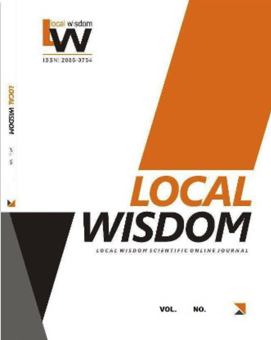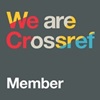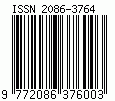Mapping Social Behaviour of Suku Laut Communities in Traditional Coastal Settlements Landscape Element on Mainland Batam
DOI:
https://doi.org/10.26905/lw.v16i2.12324Keywords:
Suku Laut, Social behaviour mapping, Traditional coastal settlementAbstract
Sustainable future development is expected to support the creation of human welfare throughout the world, including traditional tribes and minorities. This research examines the phenomenon of a traditional tribe, namely the Sea Tribe or Suku Laut, which represents maritime communities on the mainland of Batam, Riau Islands, Indonesia, which requires special attention in the midst of industrial development and modernisation which has an impact on the sustainability of Suku Laut traditional coastal settlements. This research utilizes participant observation methods to analyze the social behaviour map of the Suku Laut community. This study found that community behaviour maps influence spatial formation and settlement patterns. In conclusion, social behaviour mapping provides benefits for the government in planning and managing traditional coastal settlements on the Batam mainland for future development in accordance with the social behaviour and local wisdom of the Suku Laut community.
Downloads
References
Aguspriyanti, et al. (2020). “Analisis faktor-faktor penyebab kekumuhan di permukiman pesisir kampung tua Tanjung Riauâ€, Journal of Architectural Design and Development, 1(2),176–186. http://dx.doi.org/10.37253/jad.v1i2.1501
Ancung, V.M., & Sutisna, S. (2021). “Pola pemukiman masa depan masyarakat pengembara laut, Suku Bajauâ€, Jurnal Stupa: Sains, Teknologi, Urban, Perancangan, Arsitektur, 3(1), 261–272. https://doi.org/10.24912/stupa.v3i1.10759
Barker, R. (1976). Environmental Psychology: People and Their Physical Settings, Holt, Rinehart & Winston, New York.
Berkowitz, A. D. (2004). The Social Norms Approach, Independent Consultant, New York.
Boldemann. C., et al. (2006). “Impact of preschool environment upon children's physical activity and sun exposureâ€, Preventive Medicine, 42(4), 301–308. https://doi.org/10.1016/j.ypmed.2005.12.006
Bombari, D., Schmid, M.M., et al. (2015). “Studying social interactions through immersive virtual environment technology: Virtues, pitfalls, and future challengesâ€, Frontiers in Psychology, 6(869). https://doi.org/10.3389/fpsyg.2015.00869
Chanet, N.T., Gunawan, A., Munandar, A. (2022). “Culture-based landscape concept of the sea tribe old kampong of Batam Cityâ€, Journal of Environmental Management and Tourism, 7(63), 1867–1880. https://doi.org/10.14505/jemt.v13.7(63).07
Decree of The President of The Republic of Indonesia. (1997). Batam Island Development Number 74 Year 1971, Repiblic Indonesia, Jakarta.
Effendi, D., et al. (2017). “Pola perilaku masyarakat terhadap pemanfaatan ruang terbuka publik di pusat kota Ternateâ€, SPASIAL: Perencanaan Wilayah dan Kota, 4(1), 185–197. https://doi.org/10.35793/sp.v4i1.15729
Haryadi and Setiawan. (1995). Arsitektur lingkungan dan perilaku; suatu pengantar ke teori, metodologi dan aplikasi, Proyek Pengembangan Pusat Studi Lingkungan Direktorat Jendral Pendidikan Tinggi, Departemen Pendidikan dan Kebudayaan RI, Jakarta, Indonesia.
Hume, C., et al. (2005). “Children's perceptions of their home and neighborhood environments, and their association with objectively measured physical activity: a qualitative and quantitative studyâ€, Health Education Research, 20(1), 1–13. https://doi.org/10.1093/her/cyg095
Indonesia Ministry of Maritime Affairs & Fisheries. (2019). Suku Laut mengarungi kehidupan selingkar sampan. Direktur Pendayagunaan Pesisir dan Pulau-Pulau Kecil Kementerian Kelautan dan Perikanan, Jakarta.
Kusnadi. (2009). Keberadaan nelayan dan dinamika ekonomi pesisir, Ar-Ruzz Media, Yogyakarta.
Lenhart, L. (1997). “Orang Suku Laut ethnicity and acculturation. Bijdragen tot de taal-, land- en volkenkundeâ€, Journal of the Humanities and Social Sciences of Southeast Asia, 153(4), 577–604. https://doi.org/10.1163/22134379-90003916
Maitlis, S., et al. (2013). “Sensemaking and emotion in organizationsâ€, Organizational Psychology Review, 3(3), 222–247. https://doi.org/10.1177/2041386613489062
Maksimović, J. and Evtimov, J. (2023). “Positivism and post-positivism as the basis of quantitative research in pedagogyâ€. Research in Pedagogy 13(1), 208–218. https://doi.org/10.5937/IstrPed2301208M
Moore, R. and Cosco, N. (2016). Using behaviour mapping to investigate healthy outdoor environments for children and families: conceptual framework, procedures, and applications, Taylor and Francis, London.
Morrow, V. (2001). “Using qualitative methods to elicit young peo- ple's perspectives on their environments: some ideas for community health initiativesâ€, Health education research, 16(3), 255–68. https://doi.org/10.1093/her/16.3.255
Muhadjir, N. (2002). Metodologi Penelitian Kualitatif: Edisi IV, Cet. 2, Rake Sarasin, Yogyakarta.
Pradhan, B.K., et al. (2000). “Rural-urban disparities: income distribution, expenditure pattern and social sectorâ€, Economic and Political Weekly, 2527–2539. https://doi.org/10.2307/4409504
Rahmat, S., et al. (2021). “Agama masyarakat Suku Laut kampung Panglong Desa Berakit, Kabupaten Bintan (1965-2011)â€, Tsaqofah dan Tarikh: Jurnal Kebudayaan dan Sejarah Islam, 6(1), 85–97. https://doi.org/10.29300/ttjksi.v6i1.4474
Rapoport, A. (1983). “Development, culture change, and supportive design, Journal Habitat International, 7(5-6), 249–268. https://doi.org/10.1016/0197-3975(83)90076-0
Ratodi, M. (2017). Behaviour mapping-pemetaan perilaku dalam penelitian dan perancangan arsitektur, Universitas Islam Negeri Sunan Ampel Surabaya, Surabaya.
Santrock, J.W. (2002). Life span development. Erlangga, Jakarta.
Shteynberg, G. (2015). “Shared attentionâ€, Perspectives on psychological science, 10(5), 579–590. https://doi.org/10.1177/1745691615589104
Suwarlan, S.A., et al. (2023). “Social norms framework of Suku Laut in traditional coastal settlement of mainland Batamâ€, International Journal of Sustainable Development and Planning, 18(3), 703–713. https://doi.org/10.18280/ijsdp.180306
Trisniawati Dewi 2015 Perubahan sosial ekonomi masyarakat pesisir Desa Sumberkencono Kecamatan Wongsorejo Kabupaten Banyuwangi tahun 2008–2014, Thesis Universitas Jember, Jember.
Yulia. (2016). “History Evolution of Sea Tribe in Tanjung Gundap Village Tembesi Sagulung District of Batam Years 1982–1990â€, Journal Historia: Pendidikan Sejarah 1(2), 139–152. https://doi.org/10.33373/his.v1i2.519
Downloads
Published
How to Cite
Issue
Section
License
Copyright (c) 2024 Local Wisdom : Jurnal Ilmiah Kajian Kearifan Lokal

This work is licensed under a Creative Commons Attribution-NonCommercial-NoDerivatives 4.0 International License.












